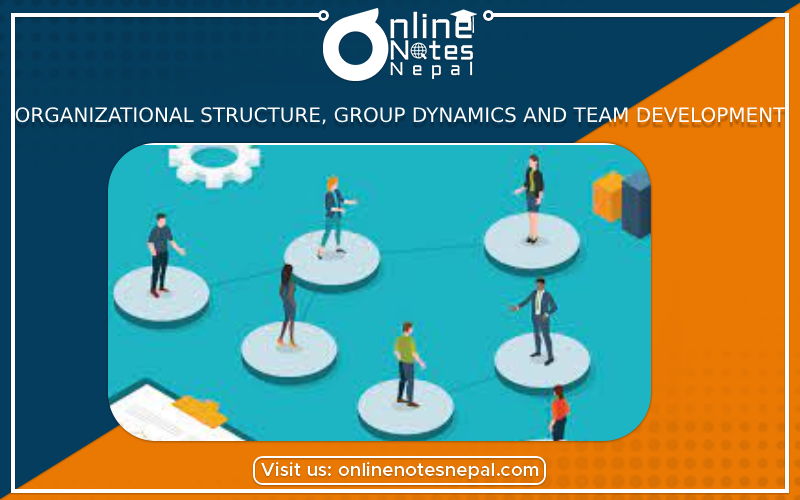Published by: Anu Poudeli
Published date: 30 Jun 2023

The framework that determines how tasks, roles, and responsibilities are allocated, coordinated, and regulated inside an organization is referred to as organizational structure. It establishes a clear hierarchy, communication channels, and reporting linkages, all of which aid in streamlining operations and achieving the organization's objectives.
Here are some significant organizational structure points:
1. Organizational Structures : Organizational structures are classified into functional, divisional, matrix, and flat structures. Each structure has advantages and disadvantages, and businesses choose one based on their size, narure of labor, and aims.
2. Functional Structure : Employees are divided into functional structures based on their common skills, functions, or expertise. It enables specialization and efficient collaboration between departments or functional areas. However, it has the potential to establish communication silos and impede cross-functional collaboration.
3. Divisional Structure : A divisional organization organizesemployees based on products, services,clients, or geographic areas. Each division functions independently, with its own resources and decision-making authority. This structure promotes flexibility and adaptability, but it may result in resource duplication and a lack of focus.
4.Matrix Structure : A matrix structure combines components from both functional and divisional structures. Employees are divided into functional departments and operate in cross-functional teams on specific projects. This structure promotes collaboration, resource sharing, and adaptability, but it can also lead to complexity and power disputes.
5. Flat structure : A flat structure encourages a low hierarchy and decentralized decision-making . It reduces the number of management layers, promotes employee empowerment, and encourages open communication. It may, however,result in role uncertainity and a lack of clear authority.
Group Behavior
The interactions, relatinships, and processes that occur inside a group or team are referred to as group dynamics. It entails researching how individuals interact, communicate, and influence one another when working together.
Here are some importan tfactors to remember about group dynamics :
1. Formation : Group formation occurs through a variety of procedures, including official assignment, self-selection, and organizational design. Members define their roles, expectations, and goals throughout this stage.
2. Roles and Norms : Individuals within a group take on various responsibilities such as leader, facilitator, or task-oriented positions. Norms emerge as agreed expectations and standards that guide group member' behavior.
3. Communication : Effective communication is essential for group dynamics. It entails active listening, information sharing, and dispute resolution. Clear and honest communication promotes group trust, cooperation, and synergy.
4. Cohesion : The degree of cohesiveness, camaraderie, and mutual attraction among group members is referred to as group cohesion. High cohesiveness improves group cohesion, motivation, and overall performance.
5. Groupthink : Groupthink arises when members place consensus and unity ahead of citical thinking and independent perspectives. It can result in poor decision-making and stifle creativity. Diverse opinions and healthy dissent can help reduce groupthink.
Team Building
Team development is the process of improving a team's efficiency and performance over time. It consists of the following stages:
1. Formation : During the formation stage, team members get to know one another and develop their first relationships. Members rely on the leader for advice when roles and responsibilities are unclear.
2. Storming : Conflicts , power struggles, and differences of opinion characterize the storming period. As team members create their distinct iidentifies inside the team, they may challenges each other and the leader.
3. Normimg : Team members begin to resolve disagreements, establish norms, and foster cohesion during the norming stage . They recognize and value each other's skills and work together to achieve a common objective.
4. Performing : The performing stage is distinguished by high levels of trust , teamwork, and synergy. Team members collaborate successfully, maximizing their collective strengths and achieving high performance.
5. Adjourning : Team disperse or transition to other projects during the adjourning stage. It entails looking back on achievements, appreciating contributions, and celebrating success.
It is crucial to highlight that group dynamics and team development are complicated topics that are explained by numerous theories and models points mentioned above provide a general overview, but more investigation and research can provide a more in- depth understanding.